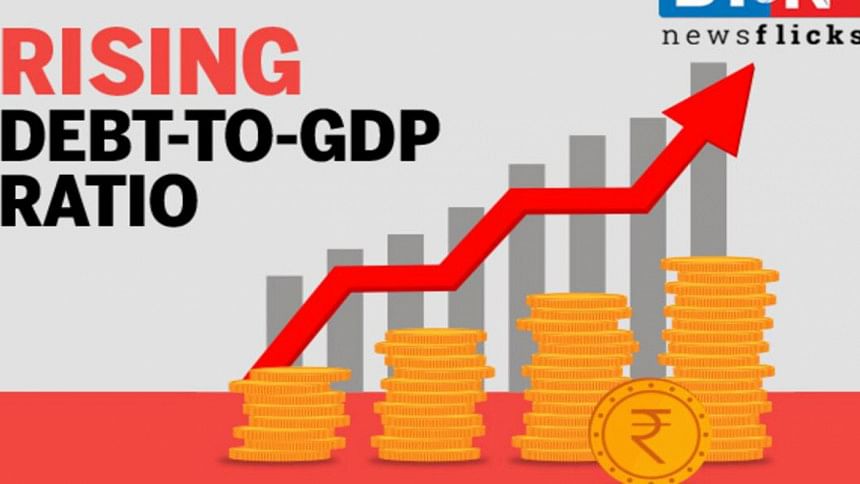Debt-to-GDP ratio rises

Bangladesh's debt-to-GDP ratio rose by around two percentage points to 32.55 percent in the third quarter of last fiscal year 2022-23, according to the latest quarterly debt bulletin of the finance ministry.
On December 31, 2022, it was 30.56 percent.
The debt-to-GDP ratio is a comparison of a country's public debt and its gross domestic product (GDP), according to investopedia.com.
By comparing what a country owes with what it produces, the debt-to-GDP ratio indicates its ability to pay back its debts.
Though the debt to GDP ratio grew in the quarter, the finance ministry said it was still significantly lower than what the International Monetary Fund (IMF) recommends, which is less than 55 percent.
The total outstanding debt of Bangladesh was Tk 14,48,333 crore as of March 31, 2023, up from Tk 13,59,898 crore on December 31, 2022, the ministry data shows.
Out of the total debt of the country, 63 percent was domestic and the remaining 37 per cent owed abroad.
The domestic debt to GDP ratio rose to 20.57 percent from a previous 19.42 percent. Meanwhile, the external debt to GDP ratio went up to 12.01 percent from 11.14 percent.
As of March 31, 2023, total domestic debt stood at Tk 9,15,135 crore. Of that, 54 percent was to the banking sector and 39 per cent for savings instruments. Another 7 per cent was for provident funds of the government.
During the first nine months of last fiscal year, net borrowing from the savings certificates was Tk 4,162 crore in the negative as people redeemed a higher number of certificates than what they purchased.
The report said various reform initiatives, such as an online issuance process, logical investment limit, and introduction of multi-tier interest rates along with inflation contributed to the reduction of the net sales of the national savings instruments.
Though the domestic debt was higher with the banking sector, the government had to spend more for the non-banking lenders due to the higher interest rate of the savings instruments.
In the year, the spending behind interest payments was higher than that in the same period of the previous year owing to the higher interest rate in the banking sector amidst a liquidity crunch.

 For all latest news, follow The Daily Star's Google News channel.
For all latest news, follow The Daily Star's Google News channel. 





Comments